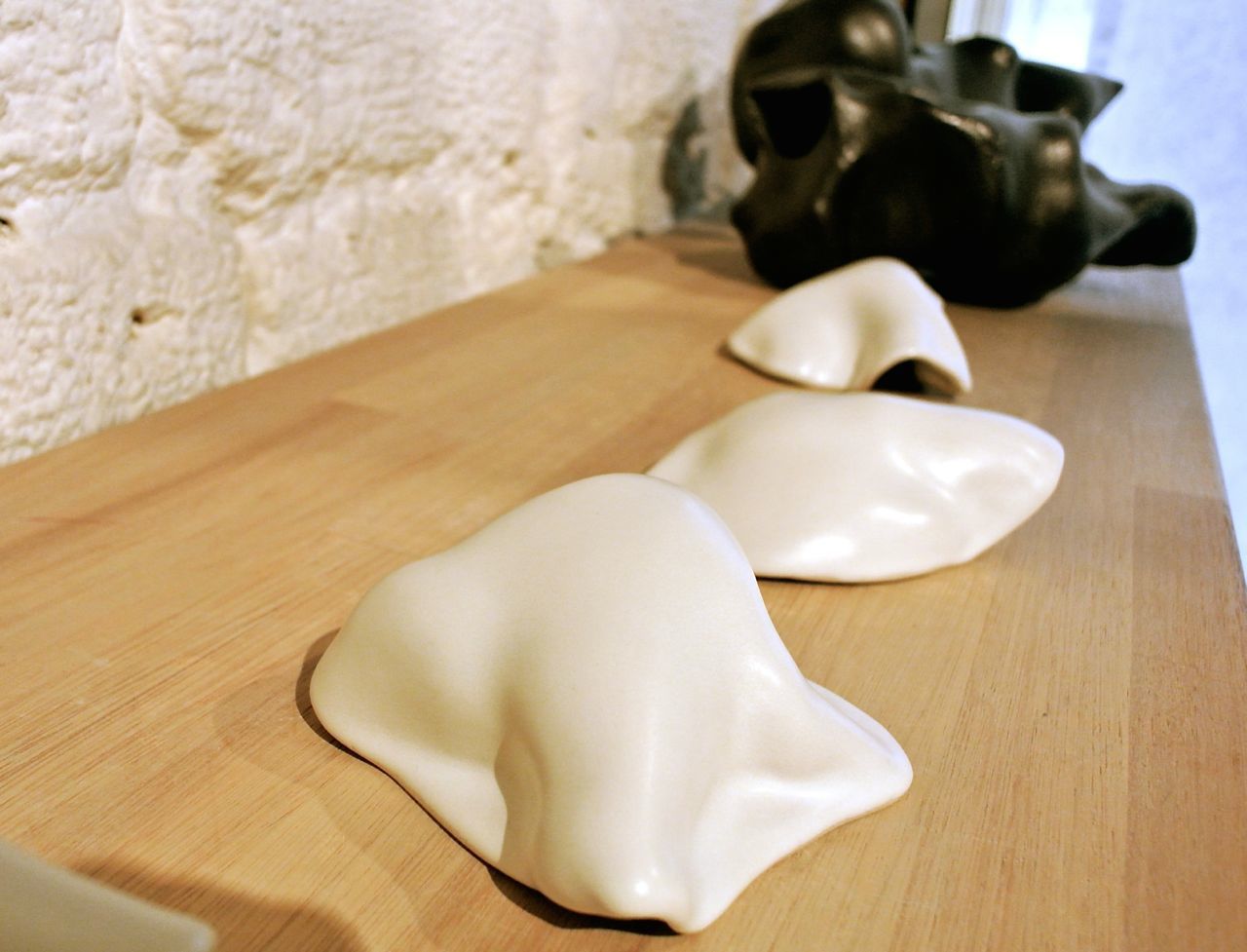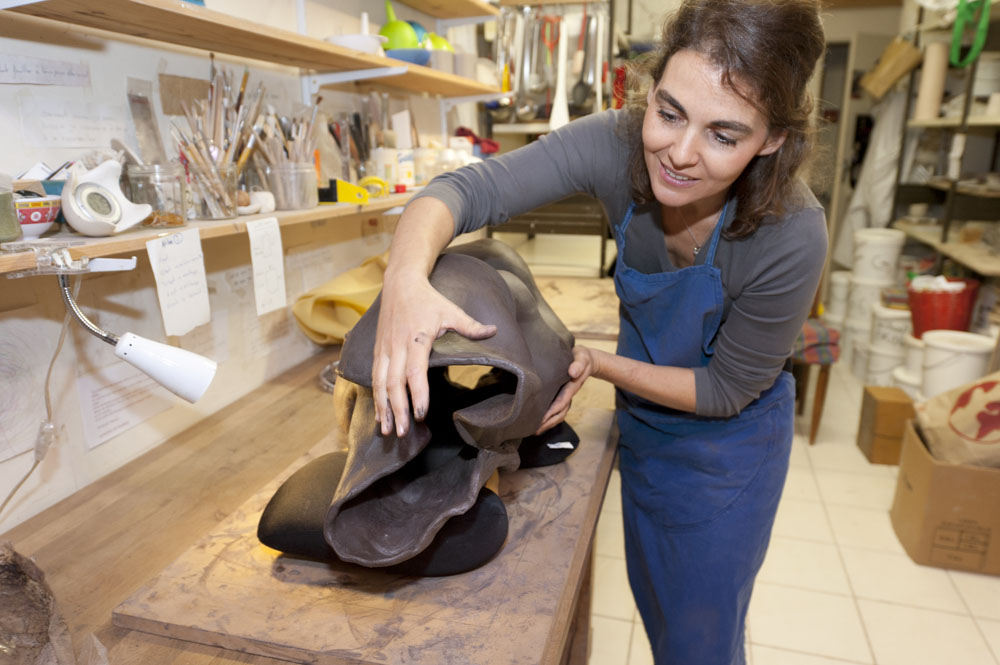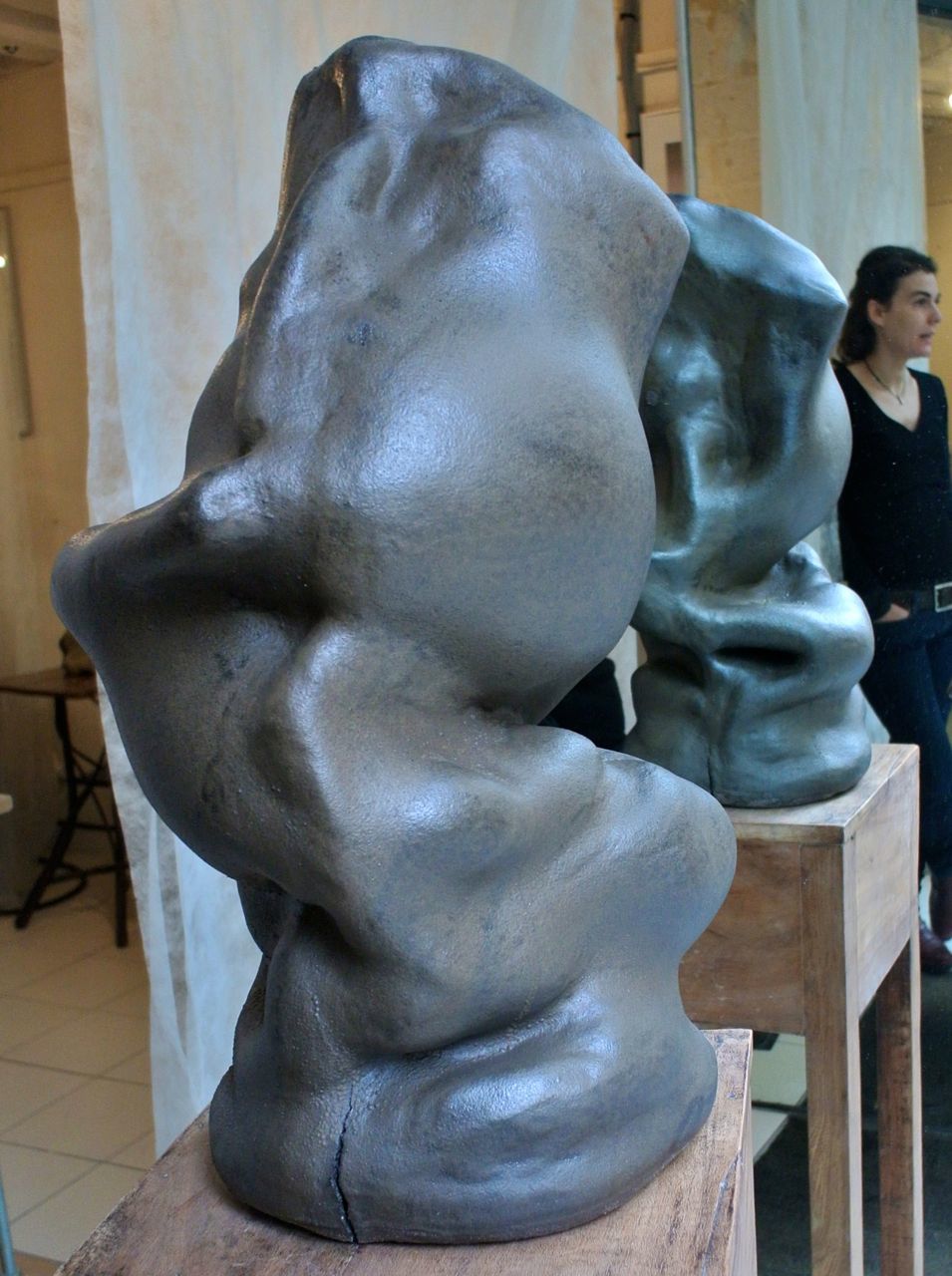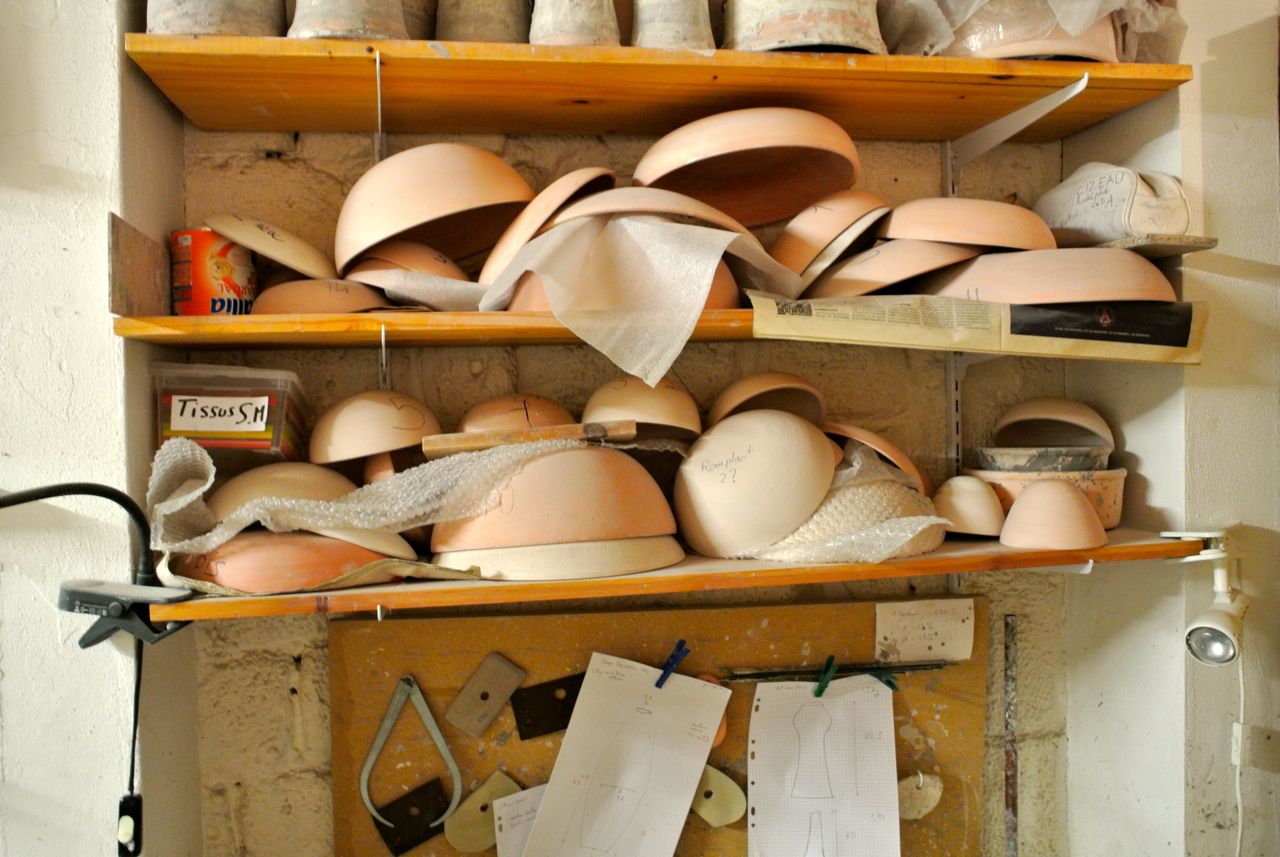Sandra Zeenni is a sculptor and ceramist. In her workshop, in the dynamic Montorgueil neighbourhood of Paris, she focuses on shapes, materials and light.
There’s no computer or internet here, just two large kilns, a slab roller to create pottery plates, shelves filled with shapes, experiments and finished works, and many boxes containing her extensive research on glazing.
To create her latest pieces, shown in December and January in Paris at Silbereis Gallery, she pushed up the capacity of her kilns for larger formats.
Meet Sandra Zeenni with us!
The Nobes Series, whose name is derived from the word “bones”, is inspired by the organic shapes and curves of the human body. Sensual volumes, covered with dense but uneven black or brown glaze sometimes stained white, are smooth, shaped from two clay slabs assembled in a true co-mingling with the earth.
This sculptural work originated with her Oubches Series (the name derived from the French “bouche” or “mouth”); where white and rounded parts like bones are deformed and polished almost like game pieces.
Her first creations, the Turquoises, vases in pure and classic forms, were immediately hailed as a great success. She was inspired by great master ceramicists like Decoeur and silversmith Després, and older pieces, notably Phoenician vases that recalled her Lebanese origins. They’re often described as looking like they could have come from a treasure chest from an ancient sunken vessel.
Alex Vervoordt and Pierre-Marie Giraud, the reknowned Belgian and Flemish gallerists, noticed The Turquoises and showed them at Art Basel, in Brussels, where they were bought by museums and collectors. In 2013 she was part of an expo on the Mediterranean at Villa Empain / Boghossian Fondation in Brussels called 'The Blue Route, from the Mediterranean to China.'
When she decided to devote herself entirely to ceramics, Sandra Zeenni learned all the techniques of her craft from masters in the field : the mastery of the earth in the workshop of Augusto Tozzola; the secrets of enamel from Helena Klug, who imparted her love for beautiful work done slowly, and an internship with the highly recognized Wayne Fischer. Her residency in Japan gave her the confidence to confront and master larger formats.
"The mastery of the material is essential -- then you have the freedom to create," she says. "Now I can concentrate on shapes and materials that I want."
In the coming months, this means further work on Nobes. And maybe to "play a little bit with the classic turquoise" and find a way to modernize it.
Discover more on her work on her website
Where to see her work in 2014 in France
Silbereis Gallery in Paris
Maylis Queyrat in Paris
Capazza Gallery in Nançay
Musée National Adrien Dubouché, Limoges, June to October
Musée de Sarreguimes (November 2014 till March 2015)









